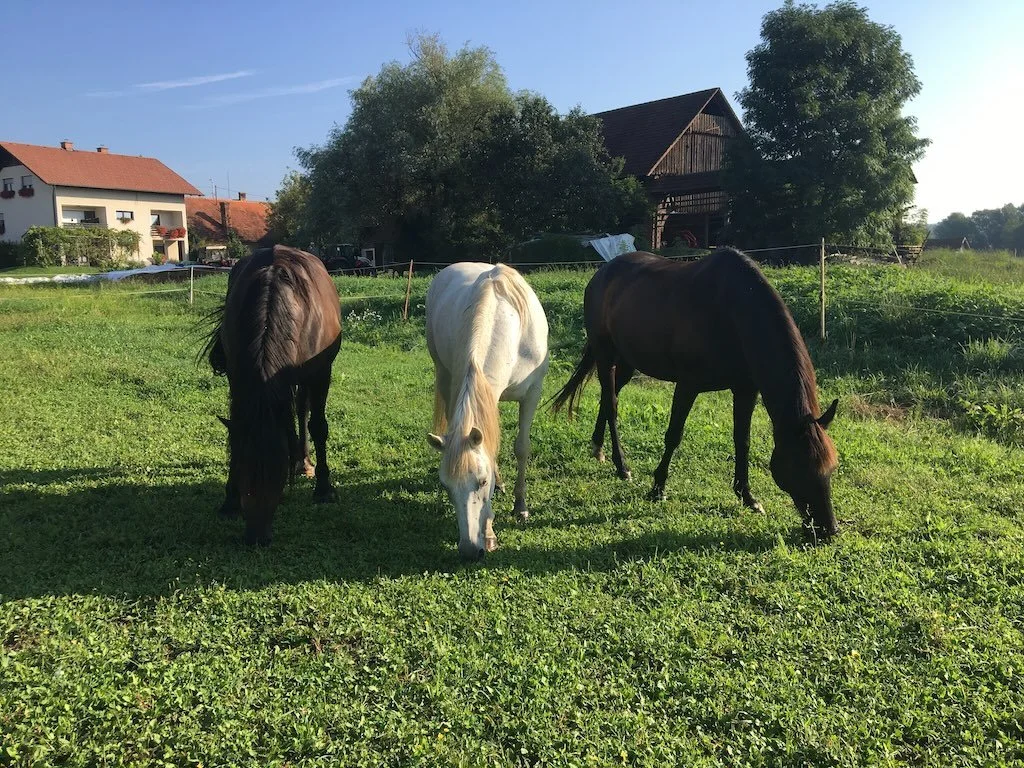Active retirement
Horses that can’t do their job anymore will still benefit from exercise. Instead of letting their muscles go to waste, it is important to keep them active.
Hand walking can be a great way to keep a senior horse fit.
When horses get a bit long in the tooth, when they start to need longer and longer to warm out of their stiffness, when their joints start to show signs of wear and tear, many owners start thinking about retirement. After a long riding career, enjoying the rest of their days somewhere in the pasture seems like a good idea. But is it really?
Many owners choose to retire their horse when they can't perform their job anymore. And while it might seem like the best thing for the horse, it can actually be counterproductive, especially if it's the »turn him out to the pasture« type of retirement. For horses that have lived their entire life as a sports horse and are used to being blanketed and stalled, full on pasture life can be quite stressful. They often have trouble fitting in with a herd and since they are elderly, they might even have a hard time getting enough to eat. Another issue is that horses that were in full work, are used to exercising on a regular basis and their bodies might have a hard time adjusting to a life of leisure. If their joints are showing signs of wear and tear, letting muscles go to waste is a bad idea. If the horse loses its muscles, it will be the joints that will have to work that much harder. Which of course will make any joint issues worse. Which will cause the horse to move less, lose even more muscles and the joints will have to work even harder... It's a vicious cycle.
If you decide to turn your horse out with a herd, make sure he gets along with the rest of the members.
So, what's the alternative? Instead of abruptly ending the horse's riding career, consider implementing a lighter exercise regime, suited to the elderly. If your horse can't jump anymore, perhaps he can go on easy trail rides, or do some very low-level dressage. If even that's too much, maybe he would enjoy some hand walking in the woods or being a teacher for in-hand work. I realise that taking the time to walk in the forest for an hour with your senior horse twice a week might seem like something you definitely don't have time for, but I believe we owe it to our horses to make sure they are happy and healthy even when they’re way past their prime. We are not doing the horses a service by letting them »enjoy« the rest of their days in the pasture. If you want to do right by them, find an appropriate level of exercise for them and make sure they get it. Take the time to bring them for a walk or do some core strengthening exercises with them. This will make the load their joints are carrying lighter, which will in turn make life more enjoyable. And isn't that what it's all about? Happy and healthy horses, even the ones you can't ride anymore.

